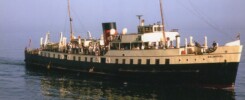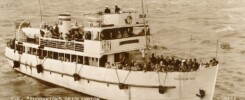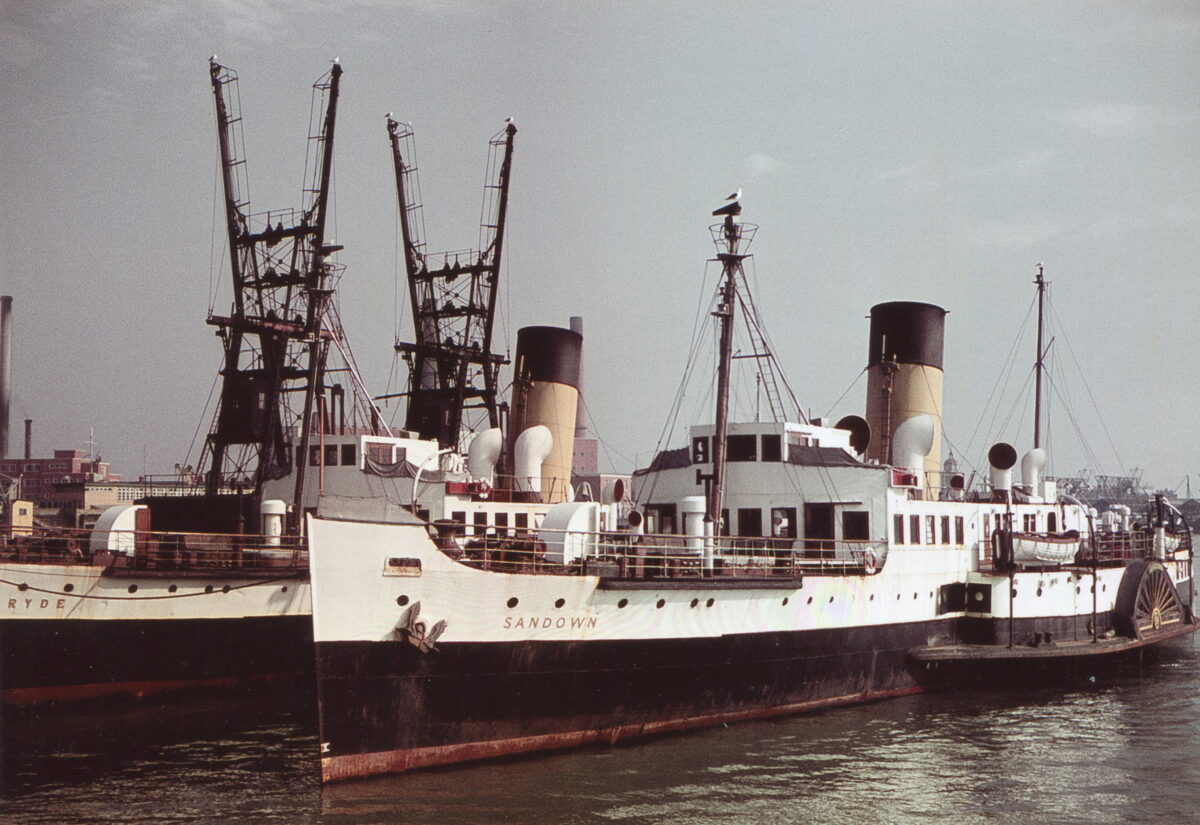
By 1964 British Railways still needed two paddle steamers Sandown and Ryde to provide extra capacity on busy summer Saturdays for their Portsmouth/Ryde route augmenting the capacity of their three then comparatively modern diesel ships Brading, Shanklin and Southsea. Up to 1962 there had been a third paddle steamer Whippingham but with ever more Britons seeking their holidays abroad rather than on the Isle of Wight that market was already in retreat.
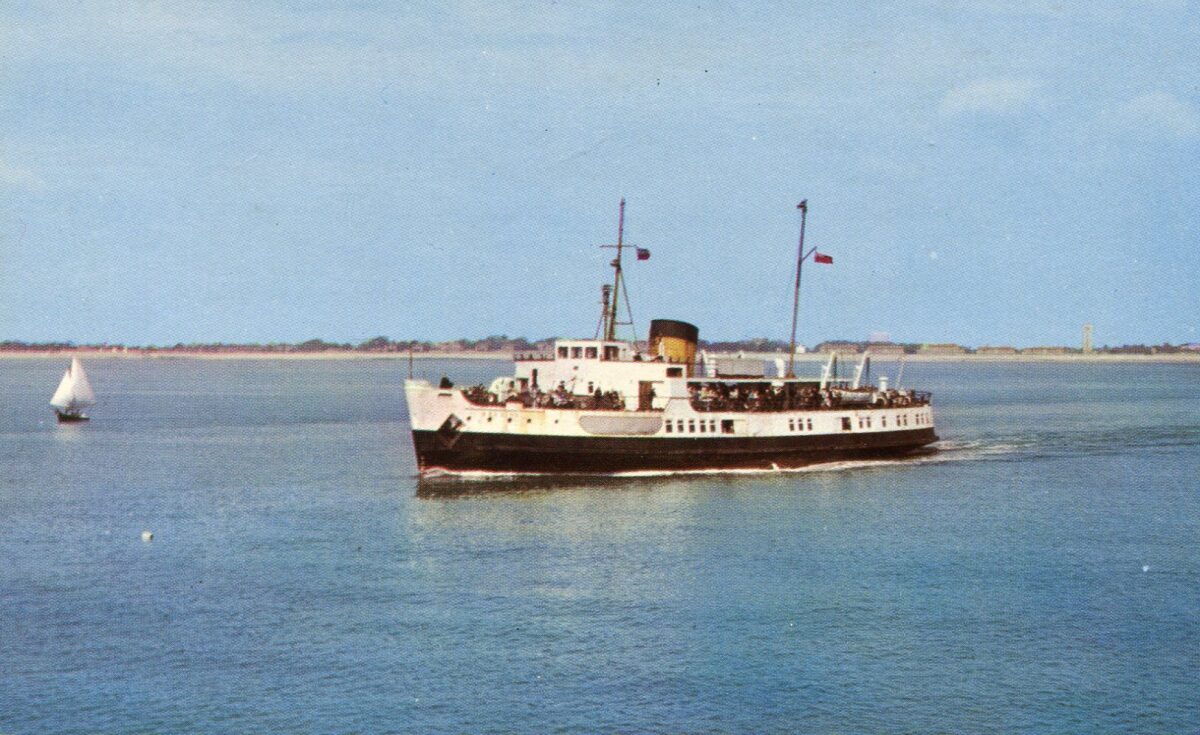
Two of the diesel ships provided the winter service with the third alternating for her annual Board of Trade survey and dry-docking. So one or other of the paddle steamers was still needed in reserve at Portsmouth during at least part of each winter to cover the possibility of breakdowns of the two operational diesel ships. For most of the 1963/64 winter this was Sandown. She was out and about in steam in January covering Brading’s schedule from Thursday 9th to Saturday 11th January 1964 whilst she was alongside for work caulking her decks which were leaking badly.
Both steamers spent this 1963/64 winter at Portsmouth with Sandown sailing off for underwater Board of Trade survey and hull painting on the Newhaven grid before, and returning to take over to provide relief cover from Sandown just after, Easter. Ryde was in service on Easter Monday 29th March before making off for Newhaven herself on 7th May for her annual survey on the return of Sandown.
Although before the war the larger Portsmouth paddle steamers all had Class III Passenger Certificates enabling them to sail to the Isle of Wight Piers at Sandown, Shanklin and Ventnor and offer excursions around the Isle of Wight and to Bournemouth, after the war they were restricted to Class IV for service only inside the Isle of Wight within an area bounded by lines drawn between the church spire, West Wittering, to Trinity Church, Bembridge to the eastward, and the Needles and Hurst Point to the
westward. After the war excursions to seawards of the Categorised Waters limits in this area were left to Red Funnel which too experienced a decline in the market as the 1960s wore on until by 1969 they too had withdrawn from targeting this then fast vanishing market segment.
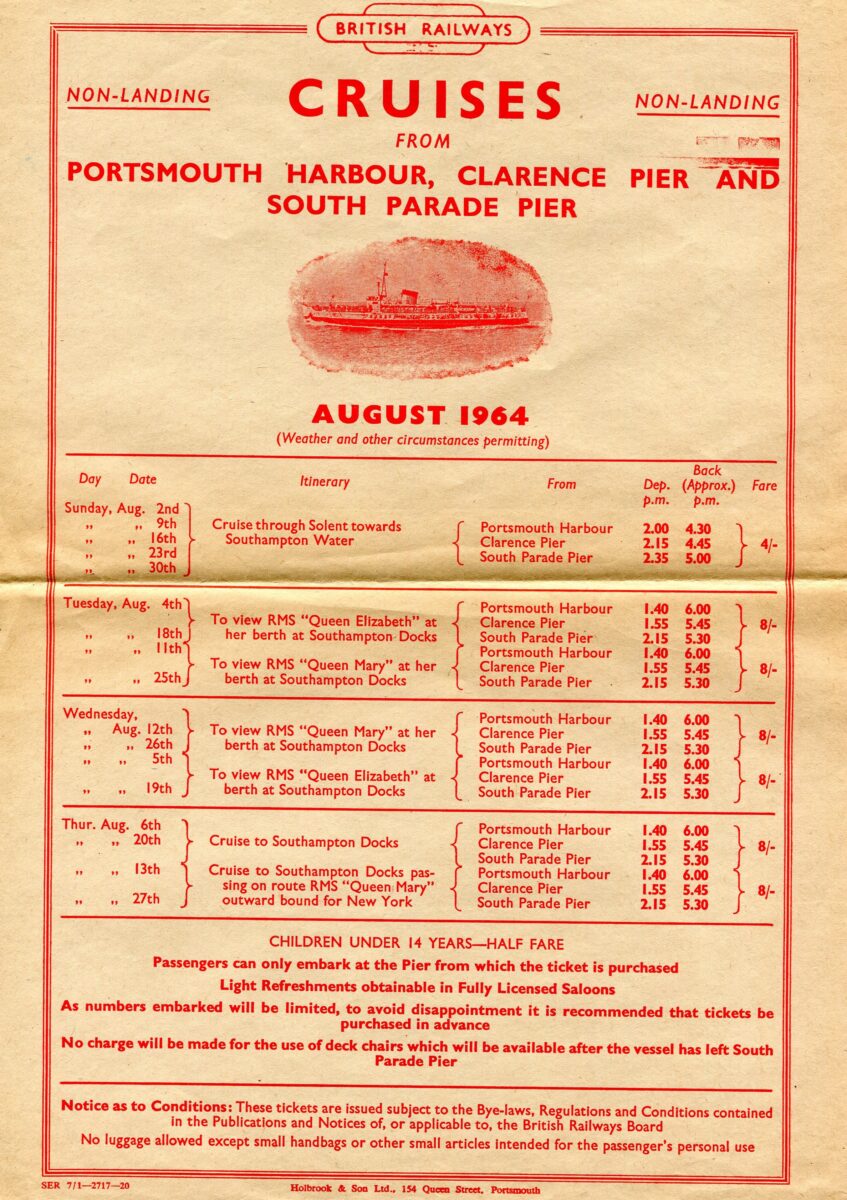
However after the War British Railway continued to offer some limited excursions within the Solent. As you can see in this steamer notice for August 1964 these included afternoon cruises “Through the Solent and Towards Southampton Water” on Sundays away from Portsmouth at 2pm, Clarence Pier Southsea 2.15pm and South Parade Pier Southsea at 2.35pm returning at 4.30pm, 4.45pm and 5pm respectively. And on Tuesdays, Wednesday and Thursdays away from Portsmouth at 1.40pm, Clarence Pier 1.55pm and South Parade Pier at 2.15pm for a “Cruise to Southampton Docks” mostly to view either the Queen Elizabeth or Queen Mary when they were in.
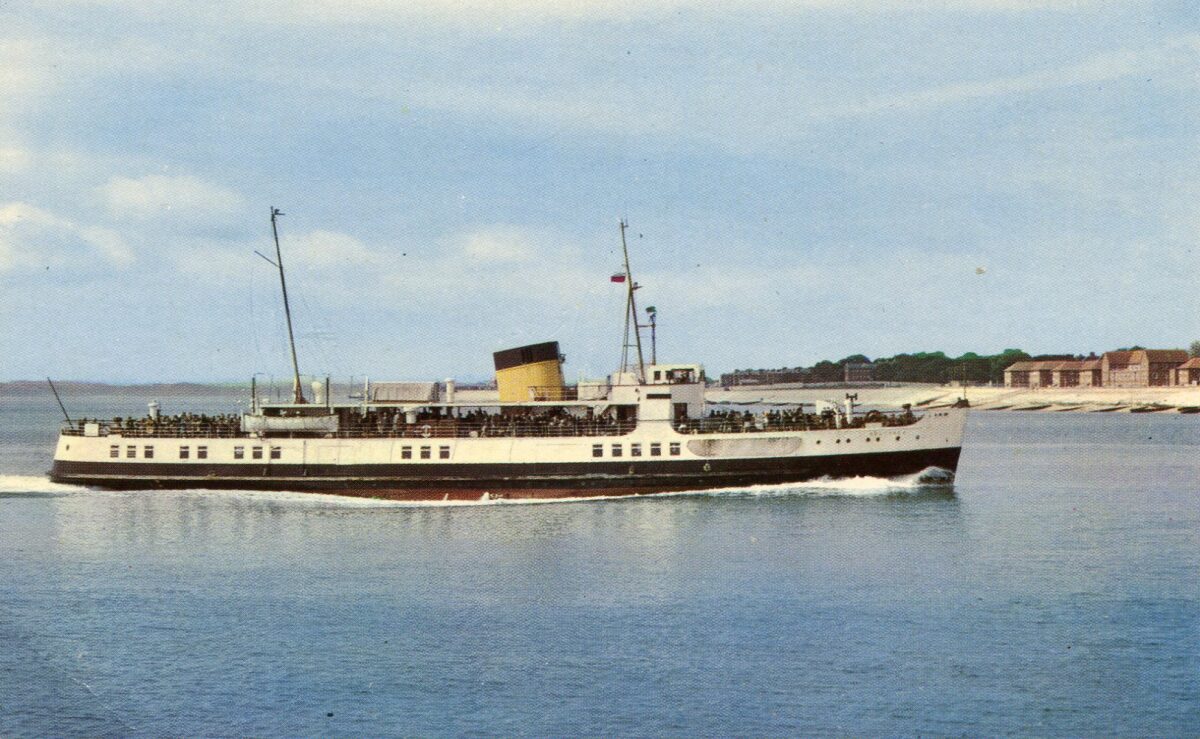
These excursions were run almost always by one of the three diesel ships although there were very occasional exceptions. For example on Whit Sunday 17th May 1964 the paddle steamer loving fraternity were over the moon that Ryde was rostered for the afternoon excursion in the Solent with an additional pick up at Ryde. It was a lovely sunny day which brought out a crowd of over 600 in ideal conditions.
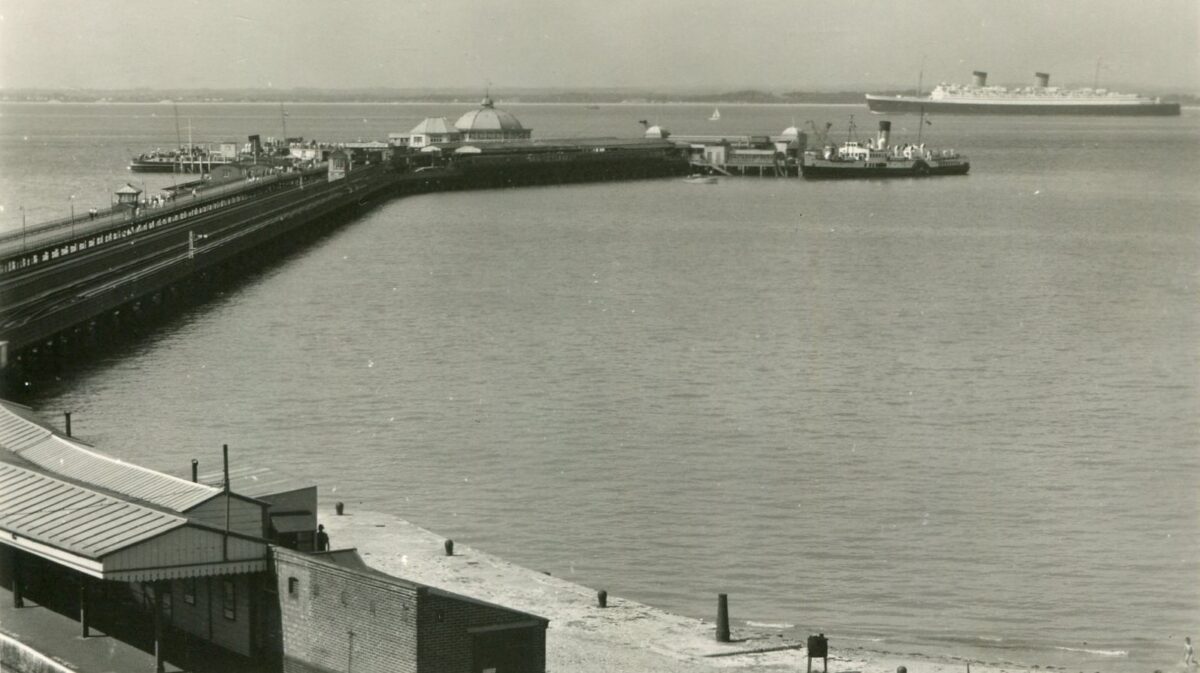
During the peak weeks of 1964 Sandown and Ryde were generally in service five days each week with Mondays and Fridays as days off. Saturdays were spent helping out on the main ferry service.

And on Sundays, Tuesdays, Wednesdays and Thursdays one or other of them took the day tripper trade between Southsea and Ryde whilst the other lay alongside the pontoon at Portsmouth in reserve to be brought out as necessary. As you will see from this steamer notice there were generally more single trips from Southsea to Ryde in the mornings than returns with the ship often rostered either to return light without passengers for the next outward bound trip from Southsea or being plugged into a main ferry return directly to Portsmouth. I guess that this reflects the pattern of traffic from Southsea at that time with people wanting to go out to the Isle of Wight from Southsea in the morning and return in the afternoon and there not being a similar return traffic of people wanting to go out from the holiday destination which was the Isle of Wight to which they had come for a day out going back to Southsea. I remember on the last occasion I sailed on Ryde in 1969 taking a morning sailing from Clarence Pier on her to Ryde and finding out when I was aboard that after she had discharged she would return to Southsea light ship. So I asked her master Capt Yelland if I could stay aboard to which he very kindly agreed. As the only passenger I had the ship entirely to myself on that trip.

There is not a lot of water at South Parade Pier at lower states of the tide and not a lot of water to the south of the pier either so the steamers usually arrived head facing east and then backed out all the way to the main Portsmouth Channel before turning as you can see in this pic.
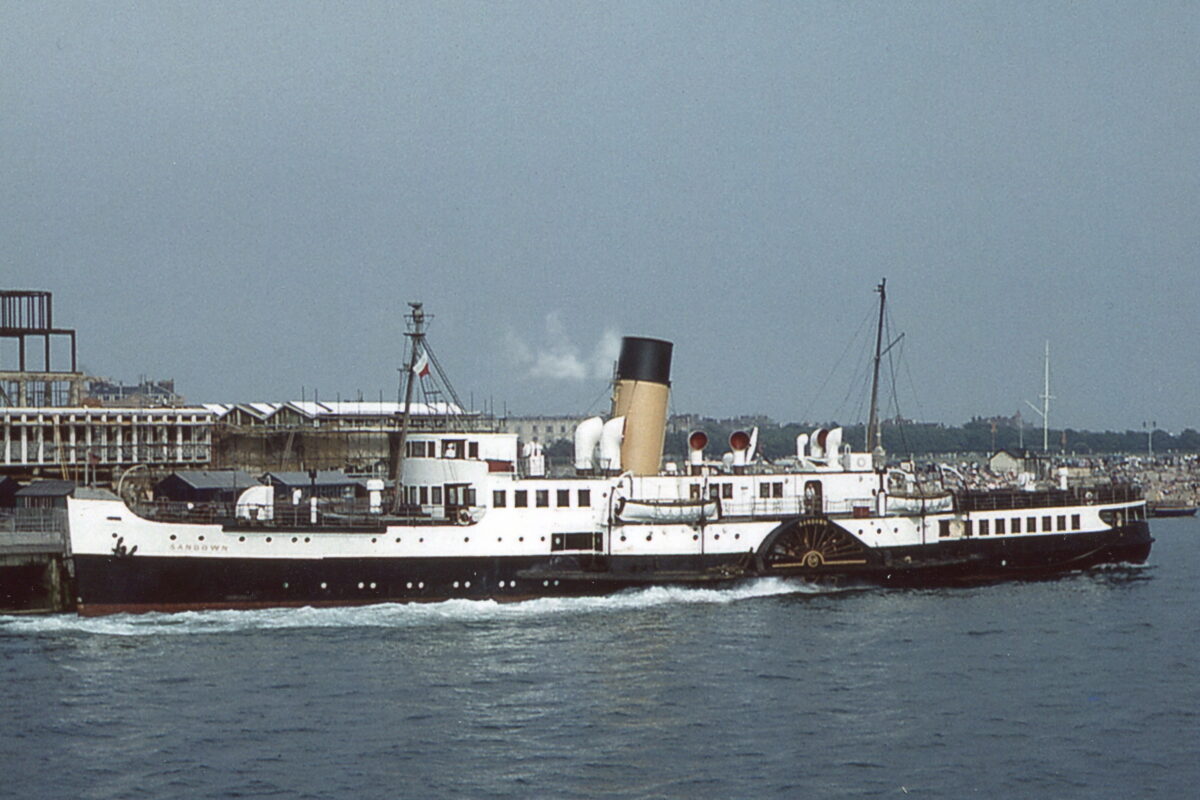
1964 was the last year of the old British Railways livery of a black hull, white upperworks and buff funnel with a black top.
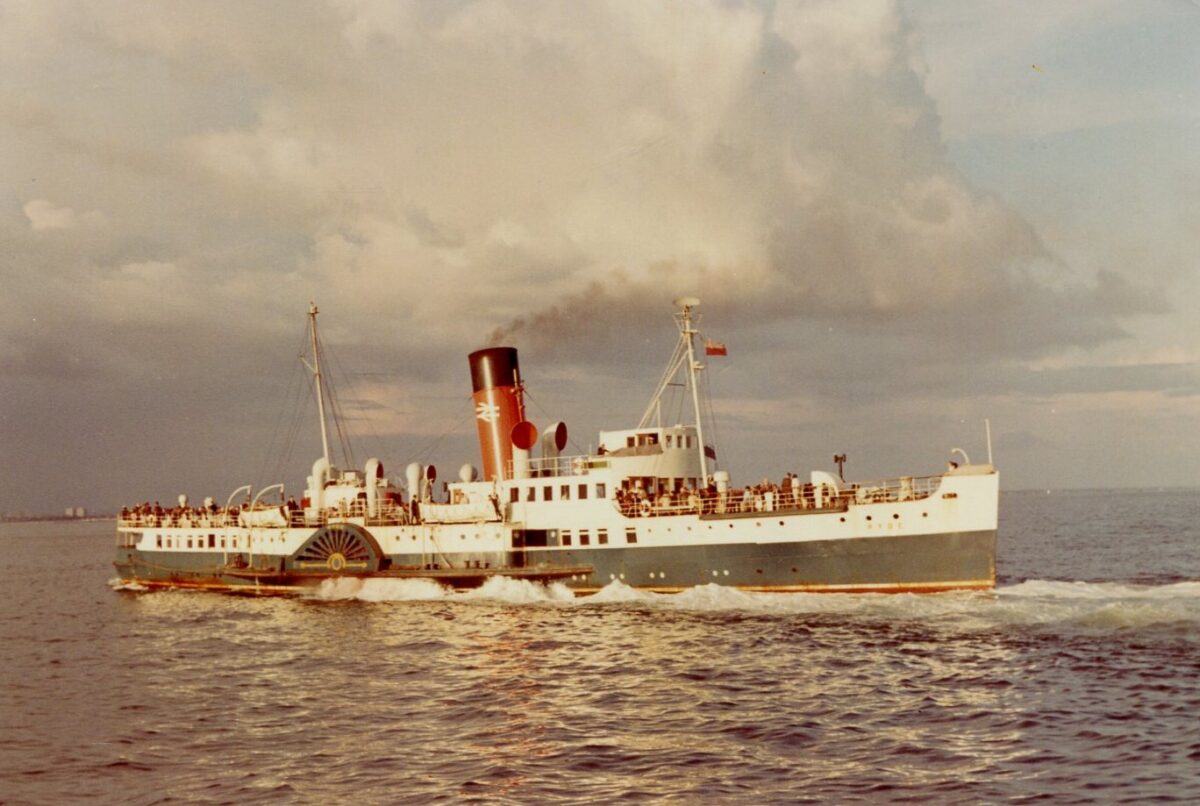
From 1965 they rebranded their ships giving them a snazzy new colour scheme of a greeny/blue hull, white upperworks and light red funnel with a black top on which the new white double arrow company logo was emblazoned. Both Sandown and Ryde emerged for 1965 in this new guise. The 1960s was a time of change. The world was moving forwards. British Railways wanted to send out a signal that they were part of that change. Out with the old. In with the new.
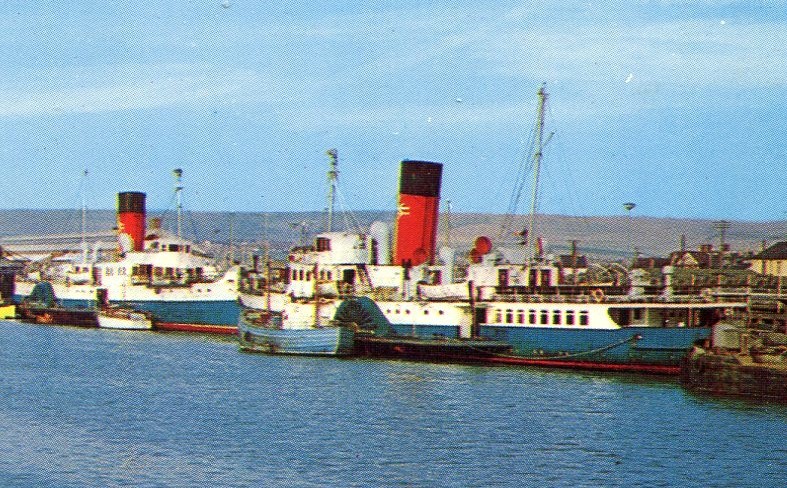
The Isle of Wight holiday market continued to decline and as a result Sandown was withdrawn after the 1965 season and scrapped. Ryde continued until 1969 when she too was withdrawn leaving the Portsmouth/Ryde route after that in the hands of just Brading, Shanklin and Southsea.

Initially Ryde had better luck than Sandown. She found a new career as a restaurant and bar at Binfield on the Isle of Wight but that did not last. As the years rolled on business fell away. With no serious maintenance her structure slowly and inexorably deteriorated. Ships are made of steel and wood. Steel rusts. Wood rots. If you don’t maintain and rebuild them as necessary then this is what happens. A sad and sorry end and a sad and sorry sight of a once lovely ship.
Kingswear Castle returned to service in 2023 after the first part of a major rebuild which is designed to set her up for the next 25 years running on the River Dart. The Paddle Steamer Kingswear Castle Trust is now fund raising for the second phase of the rebuild. You can read more about the rebuilds and how you can help if you can here.
John Megoran

